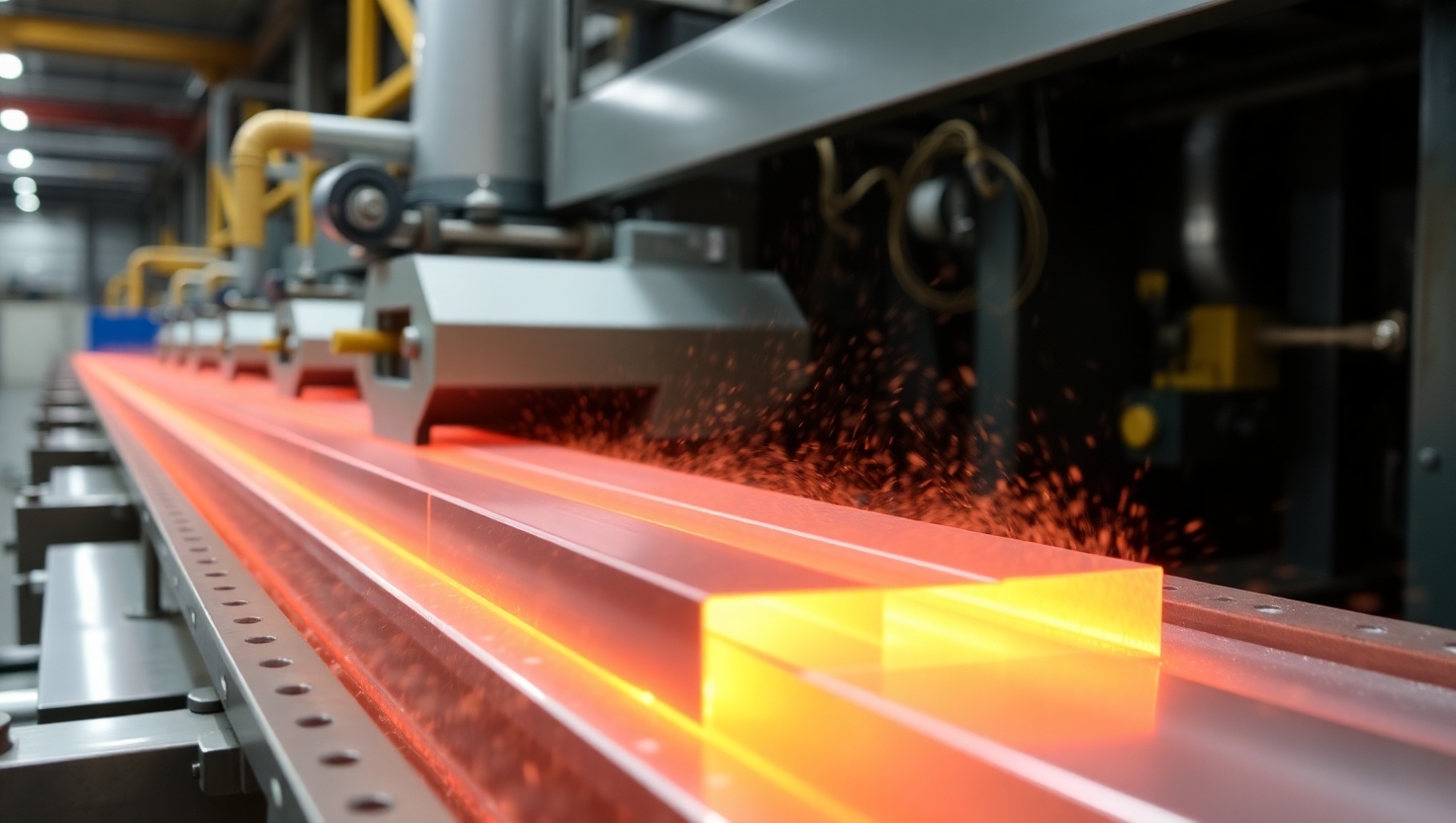The Role of Quenching in Achieving High-Strength Aluminium Profiles
Published by: ALUTimes | Date: July 16, 2025
Table of Contents
- Introduction
- What Is Quenching in Aluminium Extrusion?
- Types of Quenching Methods
- Benefits of Quenching
- Quenching in the Aluminium Extrusion Production Line
- Relationship Between Quenching and Tempering (T5, T6)
- Quality Control Measures
- Common Quenching Issues and How to Avoid Them
- Case Study: Automotive Applications
- Conclusion
- Disclaimer
Introduction
In the world of aluminium extrusion, achieving the right mechanical properties is vital for performance, safety, and durability. One of the most crucial processes that influence these properties is quenching. Quenching is a rapid cooling process applied immediately after heat treatment to set the structure of the aluminium alloy, drastically enhancing its strength and corrosion resistance. This article delves into the what, why, and how of aluminium quenching and its indispensable role in modern extrusion lines.
What Is Quenching in Aluminium Extrusion?
Quenching in aluminium extrusion refers to the rapid cooling of hot extruded profiles to lock in desirable mechanical characteristics. It is typically applied right after the extrusion process or after a solution heat treatment. The goal is to prevent the natural ageing of aluminium which could result in weaker, more ductile materials.
This rapid cooling is essential to achieve tempers such as T6, where the alloy must be cooled quickly to preserve solute atoms in a supersaturated solution.
Types of Quenching Methods
- Air Quenching: Used for simple shapes and alloys that do not require aggressive cooling. Offers uniform cooling but is slower.
- Water Spray Quenching: A high-speed cooling method used for alloys requiring quick temperature drop. Common for 6xxx series.
- Immersion Quenching: The profile is immersed in a water bath. It provides rapid and uniform cooling, but is less energy-efficient.
- Mist Quenching: A controlled blend of air and water mist for alloys with intermediate requirements.
Benefits of Quenching
- Increases Tensile Strength: Locks in structural integrity and strength.
- Improves Hardness: Especially critical for structural and load-bearing components.
- Enhances Machinability: Profiles become more suitable for CNC or other post-processing operations.
- Improved Surface Finish: Reduces warping and distortion in extrusion profiles.
- Better Corrosion Resistance: Strengthens the alloy’s resistance to oxidation and wear.
Quenching in the Aluminium Extrusion Production Line
Quenching is integrated into the extrusion line to follow immediately after the hot aluminium exits the die. Depending on the die design, alloy type, and end-use, the method of quenching is selected. Automation systems monitor and regulate temperature, nozzle pressure, water flow, and cooling rate to maintain process stability.
Relationship Between Quenching and Tempering (T5, T6)
Quenching directly impacts the type of temper an aluminium profile can achieve:
- T5 Temper: Profiles are air-cooled post-extrusion and then artificially aged.
- T6 Temper: Requires solution heat treatment, rapid quenching, and artificial aging.
The precision of the quenching step determines the effectiveness of these subsequent processes and the final mechanical properties.
Quality Control Measures
To ensure consistent results, the following QC steps are often followed:
- Monitoring quench rate with thermocouples
- Conducting hardness and tensile tests on cooled profiles
- Visual inspection for warping or distortion
- Maintaining consistent water spray pressure and cleanliness
Common Quenching Issues and How to Avoid Them
- Non-uniform cooling: Leads to distortion. Use balanced spray nozzles and uniform air flow.
- Over-quenching: Can cause micro-cracks. Monitor temperature gradients carefully.
- Scaling or residue: Caused by unfiltered water. Use demineralized water and regular filtration.
Case Study: Automotive Applications
An Indian automotive manufacturer required lightweight, crash-resistant bumper beams using aluminium extrusions. By switching to high-speed water spray quenching and adopting T6 tempering, they achieved a 40% weight reduction and met all strength compliance requirements. The quenching upgrade improved cycle times by 15% and reduced rejection rates by 10%.
Conclusion
Quenching plays a foundational role in producing high-performance aluminium extrusion products. From enhancing mechanical strength to preparing the alloy for final finishing, this single step shapes the quality, usability, and longevity of your profiles. ALUTimes recommends manufacturers prioritize efficient quenching systems and thorough quality checks to meet the evolving demand for high-strength aluminium components in 2025 and beyond.
Disclaimer
The information in this article is intended for educational and informational purposes only. For application-specific requirements, please consult a metallurgical expert or qualified extrusion engineer.

